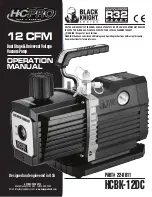
3. INSTALLATION PROCEDURES
CODE REQUIREMENTS
Installation must be in accordance with
local codes
, or, in the absence of local codes, with the latest editions
of the
National Fuel Gas Code
,
ANSI Z223.1,/NFPA 54,
and the
National Electrical Code
,
ANSI/NFPA 70.
In
Canada installations must conform with the current
CAN/CSA B149.1
and the
Canadian Electrical
Code Part 1
CSA C22.2 No.1.
Where required by the authority having jurisdiction, the installation must conform to American
Society of Mechanical Engineers Safety Code for Controls and Safety Devices for Automatically Fired Heaters,
CSD-
1.
MOUNTING BASE
The heater should be mounted on a level, noncombustible surface. Heater must not be installed on carpeting.
The heater can be installed on a combustible surface only when the appropriate listed floor shield base is provided.
An optional listed floor shield base is available for factory installation with the heater on all indoor models.
NOTE: The heater should be located in an area where water leakage will not result in damage to the area adjacent
to the appliance or to the structure. When such locations cannot be avoided, it is recommended that a suitable drain
pan, adequately drained, be installed under the appliance. The pan must not restrict air flow.
In addition, the heater shall be installed such that the gas ignition system components are protected from water
(dripping, spraying, rain, etc.) during appliance operation and service (circulator replacement, control replacement,
etc.).
CLEARANCE REQUIREMENTS FOR ALL MODELS
1.
Minimum clearances from combustible surfaces.
Floor
Front
Back
Right
Left
Top
Top
Flue
(Indoor)
(Outdoor)
Vent
(1)
(2)
12"
12"
12"
39"
Unobstructed
6"
Comb. Alcove
(1) Except for carpeted flooring, heaters are certified for installation on combustible floors, when equipped
with listed floor shield base.
(2) A front clearance of at least 24" is recommended for adequate service of burner-tray and controls.
COMBUSTION/VENTILATION AIR (Indoor models only)
WARNING: Air supply to the heater room must not be affected by mechanical exhaust vents located in other parts
of the house, such as kitchen or bathroom fans, or attic blowers. Mechanical exhaust vents may create a negative
pressure condition in the heater room that can become a hazard of asphyxiation, explosion or fire.
CAUTION: Combustion air must not be contaminated by corrosive chemical fumes which can damage the heater.
Measures must be taken to prevent the entry of corrosive chemical fumes to the combustion and ventilation air
supply. Such chemicals include, but are not limited to, chlorinated and/or fluorinated hydrocarbons such as found
in refrigerants, aerosol propellants, dry-cleaning fluids, degreasers, and paint removers. Other harmful elements may
come from bleaches, air fresheners, or mastics. Vapors from these types of products can form corrosive acid
compounds when burned in a gas flame. The resulting acid condensate can damage or substantially reduce the life
of the heater. It may be necessary to provide outside air directly to the heater in order to avoid this problem.
6







































